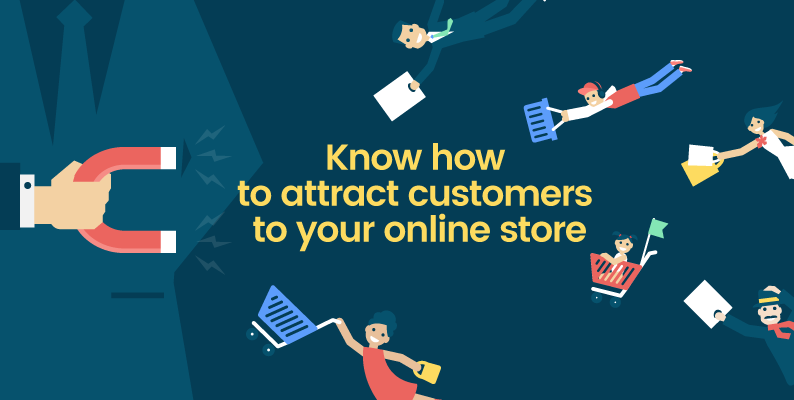It’s hard for a local online store to survive in the era of monopolized marketplaces, and sometimes working on such a business seems like gambling at PlayAmo, as it looks like nothing depends on you. However, it’s wrong, and you can achieve fantastic results, even with a small online store. Here’s how content marketing helps.
What Content Marketing Is
Content marketing is the process of creating and distributing content through social networks, blogs, and media. Its purpose is not to sell here and now, but to help users solve their problems. The result of this activity is that people begin to trust your business and buy from you.
Content marketing increases brand awareness, sales, engagement, and customer loyalty.
The benefits of content marketing for e-commerce:
- Attracts new traffic to your site.
- Increases trust in your brand.
- Creates a separate sales channel.
- Why do we need content marketing?
To answer this question, let’s present a sample consumer decision path.
Stage 1. No need. The user doesn’t need the product.
Stage 2. Ignorance. The need appears. The search for ways to meet it begins.
Stage 3. Knowledge. Determines for himself several options to meet the need.
Stage 4. Comparison. Seeks detailed information about each option. Compares prices, functionality, looks at reviews.
Stage 5. Purchase. Goes to the website, contacts the sales manager and buys.
Stage 6. Retention. Getting positive or negative experience with the product. Making a repeat purchase.
Stage 7. Brand advocacy. Shares his experience with friends, leaves a review.
Traditional marketing works with stages 5 and 6. Content marketing engages the first 4 stages. It raises awareness, educates, attracts consumers, and builds communication with the user.
The task of content marketing is to move people from one stage of decision-making to another.
Don’t forget that content marketing isn’t just about creating content. It’s the art of communicating with your potential customers. So, you need a content strategy to get results.
Your content strategy defines:
- What you’re trying to reach.
- Who you’re trying to reach.
- What content to publish.
- How your content supports the brand.
- How to promote and distribute your content.
- The metrics that define success.
All in all, a content strategy guides your efforts in the right direction. Without it, you’ll waste a lot of time on content that doesn’t work. So let’s break it down step by step: how to develop a content marketing strategy.
Step 1. Formulate a Content Marketing Goal
A content strategy depends on your business objectives. This means that all of your content is a means in achieving your business goals. Therefore, first define the purpose – what you need content marketing in your company to do.
Content solves different problems:
- Increases visibility.
- Demonstrates the product.
- Generates leads.
- Builds reputation.
- Deals with customer objections.
Tips for setting goals:
- Set measurable and achievable goals.
- Choose goals based on promotion channels and audience.
- Align goals with your overall marketing strategy.
Step 2. Identify Target Audience Segments
A content strategy targeting the wrong audience is a waste of time and money. So study your audience and create a map of your target personas.
There are different criteria by which to segment your target audience. It all depends on what your business sells. For example, the criteria for distinguishing characters can be grouped into: demographic, social, geographic, psychological.
Use this data to form segments of your target audience. Then in each segment, create character portraits that describe an individual. You can have several characters in each segment.
The practical action of this step is to segment the target audience of your business. Describe the portraits of your target personas. Only then proceed to the next step.
Step 3. Gather Keywords
Keywords are the foundation of an SEO-oriented promotion strategy. That’s why work on content always begins with the collection of keywords.
At this stage, we analyze the real needs of users, based on which we write the article. Keyword research provides you with the following information:
- What people are looking for.
- How many people are looking for it.
- How people want the information.
The first thing is to make a list of markers. To do this, look for synonyms, other forms of writing that imply the same intention.
Markers are keywords that define the topic of the article. Based on the marker queries, the rest of the keywords are assembled.
Step 4. Automate Content Production
You need a repeatable and structured process for content production. So the first thing you need is to assign a person to be responsible for content creation.
Then divide the production process into steps:
- Keyword collection. Before each publication, check keywords for your article.
- Forming a content plan. Based on your target audience and keyword analysis, compile a list of topics. Determine their format, practicality, and form a calendar of publications.
- Gathering facts. Gather information for the article from experts. Besides work colleagues, you can find an expert in thematic communities or analyze publications on the topic yourself.
- Content creation. Package the factual information you received from the expert. If it is a blog article, determine its structure – what sections it will consist of.
- Editing. Check the text to see if everything is in order with the material. Whether all sections solve the purpose of the article. Make edits until you are completely finished.
- Publication. Get the publication to the reader. Publish on a blog, in the media, conduct an email distribution.
- Analytics. Analyze the effectiveness: how many views and likes each article has gathered.
At each stage there should be a person in charge who performs a specific task. The person in charge doesn’t change, until the stage is completed. This is the only way to get a working system where someone is responsible for each step.



